The User Group has been devised to ‘improve Sea Ceptor operational effectiveness through life and to deliver long-term reductions in the cost of ownership’.
MBDA say it will enable users to share their experiences of introduction of the Sea Ceptor into service and employment and support of the operational systems, through a community of interest among the employing navies.
Built around MBDA’s Common Anti-air Modular Missile (CAMM), the company say Sea Ceptor is capable of protecting naval forces from the full range of current and future air threats, including the latest supersonic anti-ship missiles, small precision guided munitions and combat aircraft.
Rear Admiral Simon Charlier, Senior Defence and Political Adviser at MBDA said:
“Having just successfully become the first vessel to complete an at sea firing of Sea Ceptor, HMS Argyll is the perfect location to host the formal launch of the group.
MBDA is committed to always providing the best in-service support for its customers, and the Sea Ceptor User Group will provide a unique opportunity to exchange ideas and experience that will lead to significant benefits for all involved.
Sea Ceptor is the future of naval air defence, and I am hopeful that we will soon welcome additional user navies to the club.”
In total six nations have already chosen CAMM to provide their future air defence capabilities in both the maritime and land domains. In British Army service the system is known as Land Ceptor – which is also making its debut at DSEI 2017 – while for the export market it is known as EMADS (Enhanced Modular Air Defence Solutions).
By purchasing the same missile to meet the air defence needs of both the British Army and the Royal Navy, it is expected that development costs will be significantly reduced and both services will be able to utilise a common stockpile that will significantly reduce procurement and support costs.





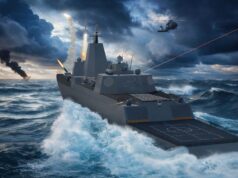
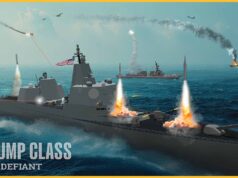
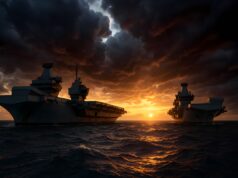


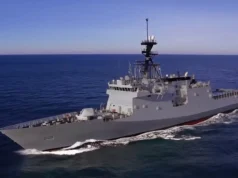
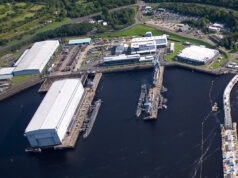

Another positive step. Well done.
Post Brexit global thinking. Good work.
Can anybody enlighten me as to the cost vs capability differentials between the camm and aster15??
CAMM is for self defence and escort protection and Aster is for wide area protection e.g the whole of a carrier task force.
CAMM has a range of 25km+ and Aster is either 30km+ or 120km+ plus depending on the variant.
Not sure the cost of the top of my head but Aster is considerably more expensive.
I think basically the CAMM uses a datalink to provide mid course guidance after launch to a point where it’s own active radar guidance takes over, Aster requires separate fire control radars to guide it to the target where it’s own guidance takes over
I think Aster is exactly the same as CAMM isn’t it – autonomously guided with an active RF seeker for the terminal phase, so both equally capable against saturation attacks?
Regarding capability differentials, as I understand it Aster is more maneuverable (can turn more sharply) than CAMM and carries more energy so will be more agile at greater range so is the superior missile. That by no means makes Sea Ceptor bad, it’s just that Aster is really, really good. Of course this is all just assumption since, as far as I know, neither have actually been tested in a combat situation.
Sea Ceptor is soft launch, quad pack (except in Type23 which looks like a one for one for the Sea Wolf) and from my understanding only requires a data link mid course guidance, I think the Aster15 requires a separate guidance radar, is hot launch and is significantly more expensive, seems like the Sea Ceptor is much more plug and play so to speak
I agree with the benefits of soft launch making Sea Ceptor easier to integrate but I’m still not convinced that the guidance is significantly different. I think Aster is also steered into the region where its own active RF seeker can do the final homing by an uplink from the ship that calculates the course corrections from the 3D radar tracking data. As I understand it T45 has separate tracking/guidance radar and volume search not because of anything special with Aster but simply so that each radar can concentrate on its own assigned function, in particular Sampson can concentrate on 3D tracking without needing to do any volume search processing. I believe though that BAE have claimed that Sampson could actually also do the volume search capability as well but that would of course use up some of its computing power and contend for array elements so is better left to a separate array. I suspect that Artisan 997 could track and guide Aster if needed although probably not in as hostile an EM environment as Sampson could cope with and not with the same number of tracks, velocities, etc.
A quick google found this article (http://www.army-technology.com/projects/aster-30/) that describes the radar guidance of the French land-based Aster 30 and has the following…
“The Thales Arabel radar is a 3D phased array radar for surveillance, tracking and missile guidance. … The system can track up to 100 targets simultaneously and manage the uplink transmission of command update data to 16 missiles simultaneously. ”
As I’ve said in a few other posts, I am not an expert so I’m only going on what I have understood from what I have read and am definitely not trying to shout you down. Maybe someone who has direct knowledge of Aster could comment on how it is guided but the quote above does seem to me to indicate that Aster is also guided onto target by uplink data based on the ground (or ship) based 3D radar tracking both missile and target and trying to get the two close enough so that the missile’s onboard radar can see the target and complete the intercept.
I don’t have any specifics, Aster 15 is likely the more expensive and more capable being a more complex design and designed from the beginning to knock out super sonic anti ship missiles.
CAMM from my understanding is an evolution as the ASRAAM, its big benefit is being QUAD packed its hard to know which is better between CAMM and the US produced ESSM.
This article has nothing to do with the Royal Marines. Stay on topic mr robot.
“I am not Russian nor North Korean. I am a UK taxpayer”
Interesting use of language. Not the same as saying you are British!
Ben you are technically right and wrong sorry.
Aster 15 is the short range equivalent to CAMM. Camm has the ability to cover flotilla or convoy area protection duty out to 15miles vs Aster 15 out to around 25-26 (although precise range is dependant upon altitude the missile has to climb to effect an interception)
The big brother to Aster 15 also carried by type 45s is the Aster 30 which can cover a wide local area out to 120 miles.
The beautiful thing about CAMM is that it can, and should be quad packed into its launcher making a 24 cell CAMM vl system on the proposed type 26 actually 96 missiles ready to launch. That is a significant number to guard against a saturation attack.
with type 45 aster 15+30 and ability to potentially take Aster 30ER (developed by mbda for Italian navy) that represents a world class air defence ship. Potential for BMD, whilst type 26+23 frigates armed with sea ceptor should have adequate limited air defence (amphibious assault group or convoy). 2 great systems coming into maturity which when coupled with crowsnest and F35B will provide the outer 3 layers of air defence. Just need to sort out point defence/ CIWS now via dragonfire laser and RAM/ phalanx for QE class/ MARSs and Tide class+ lpds and ideally an Ocean replacement and we will be onto something impressive.
“The beautiful thing about CAMM is that it can, and should be quad packed into its launcher making a 24 cell CAMM vl system on the proposed type 26 actually 96 missiles ready to launch.”
Are you sure about that Mr Bell? Do you have a source? I thought that the 24 cell CAMM VLSs on T26 (there are actually 2 x 24, one forward of the bridge next to the Mk41s and the other one aft of the funnel) are to be dedicated simple single-shot soft launch tubes. Isn’t quad-packing CAMM only for stuff like Mk41 or Sylver? I’d love you to be right and me to be wrong by the way.
I see you mentioned the Italians. I was going to bring that up in the context of “it’s a shame that the Italians aren’t in this user group, particularly because I think (although might be wrong) that they are the driving force behind a possible CAMM-ER version”. I would certainly like to see CAMM-ER happen for two reasons. The first reason is that an ER version would be good to have (I am right aren’t I that so far CAMM-ER is only brochure-ware and not in service?).
My second reason for wanting CAMM-ER is that the ER version basically involves strapping a booster stage onto the bottom of standard CAMM to get the extended range. I’m hoping that if that booster section is developed a lot of what is learned during the design could feed into creating a soft-launch variant of SPEAR 3 to make that project more likely to happen. MBDA have already shown concept models of VL SPEAR 3 and it too is basically a SPEAR 3 with a booster bolted onto the bottom.
If anything I’m more excited about the possibility of getting a VL SPEAR 3 since that would be a great asset for T31 and other smaller vessels that can’t fit or can’t afford something like Mk41. Obviously SPEAR 3 has a tiny warhead but still useful for strikes against very small targets (command posts, gun emplacements, etc) at 100km+ ranges.
I agree with you in that I’m not sure that Sea Ceptor will ever compete with Aster in absolute capability. As I understand it Aster has fundamentally different control (maneuvering) systems (pif-paf) that make it more agile and able to pull higher g turns plus, being a bigger and heavier missile I would also expect it to carry more kinetic energy into the final phase of its intercept which also makes it more capable. I’m not saying that CAMM is bad, I think CAMM is really great and I hope we continue to develop it and make more use of soft launch technology, but as a medium to medium-long range AA missile Aster is (again, as I understand it) even better, probably the best there is in fact.
Julian, re the quad packing I think you are right. My understanding is that the Type 26 Sea Ceptor cells are bespoke to the missile, one for one, no quad packing. Any quad packing would be in a Mk41 using the XLS adapter I think. Because Sea Ceptor is soft launched the tubes are simple, light and cheap. They do not add much top weight, and do not require dedicated illumination radars one of the reasons the RNZ navy chose them over ESSM for their Anzac frigate grades.
Paul – Thanks. They are a really neat solution. I love this soft launch thing. One open question that I have re the T26 dedicated Sea Ceptor soft-launch tubes though is how big are they, in particular have they been sized only for CAMM or has sufficient space been allocated to allow CAMM-ER to be carried if/when available?
Julian, you are essentially correct with everything here. CAMM is around 10x cheaper than PAMM (Aster) and will likely replace Aster 15 idc due to the minimal range difference.
Mr Bell – I am a bit out of my depth in the detail you covered but can I comment on your last point:
“Just need to sort out point defence/ CIWS now via dragonfire laser and RAM/ phalanx for QE class/ MARSs and Tide class+ lpds and ideally an Ocean replacement and we will be onto something impressive”
You forgot the recent developments and demos on the sea defence and ‘swarm’ capability of Brimstone ‘Sea Spear’ for just these needs:
https://youtu.be/FmYqq3qehDE
its from 2013 which sadly shows the tortoise like progress the UK has towards defence improvements.
For layered defence against FAC I think the RN will rely on Wilcat + Sea Venom as the outer layer then Wildcat + Sea Martlet then 30mm and lastly mini guns. Brimstone is an eye wateringly expensive anti armour weapon. Sea Martlet is cheap and all you need for a FAC. But it does need to be individually laser guided onto the target. Good for rules of engagement compliance but maybe not so good in a swarm attack.
Do you think the RN might ever roll out the MSI Seahawk Sigma mount for its 30mm cannon to add 7 Martlet? It looks quite a neat solution. It also has the option of an autonomous laser designator which presumably allows the 30mm to track onto another target after launching a Martlet which adds some flexibility in a swarm attack.
Might make sense for the River 2’s. Martlet was derived from Starstreak I think, a short range infantry anti helicopter missile which rides a laser beam, unlike a laser guided bomb which relies on reflected laser light from the target. Laser beam riding will defeat most counter measures but relies on the operator to keep the target in his sights. I’m sure there is ‘power steering’ for the weapons officer in the Wildcat. Not sure how it would work in the Seahawk Sigma.
No one cares. Bore off.